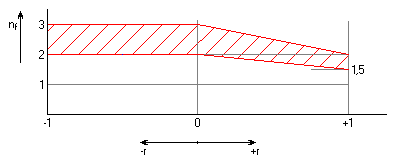Required minimum safety factor of weld joint during fatigue loading n f represents a ratio of fatigue loading and the calculated stress of weld joint n f ≤σ A / σ a or n f ≤τ A / τ a .
At fatigue loaded weld joints some factors affecting the joint safety, such as operation conditions, weld type and design, and reliability, are already considered in the calculation of weld joint fatigue strength. It is different from the static calculation. Therefore more care must be applied to the quality of weld design when proposing the factor of fatigue safety. Considering the character of fatigue loading (particularly for reversed loading), high stress concentrations originating in an unhomogenous weld decrease the joint fatigue safety. Therefore, the transitions between weld and the basic material are the most risky part of weld joint. The notch effects are the highest at places of unsuitable weld design or machining. Badly welded root of butt weld or unwelded gap in the root of fillet weld have unfavorable influence on the weld life.
The recommended minimum value of safety factor at fatigue loading is indicated in the n f =<1.5...3> range and it depends on the fatigue loading pattern. In general, reversed loading is less favorable than fluctuating loading when the fatigue loading of weld joint is considered.
The following image illustrates the effect of loading course to weld joint safety. The range of recommended minimum values of safety factor, which depends on the value of cycle asymmetry factor r = σ n / σ h , is hatched.
